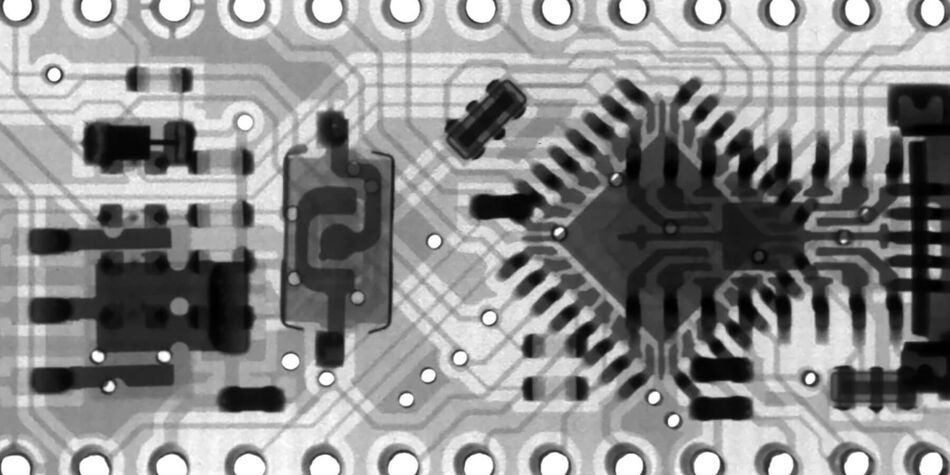Healthcare Data Integration: How to Combine Data from Multiple Sources
Healthcare data is collected to improve the cost and quality of healthcare and to generate meaningful insights for patients and researchers. But there is still a question of how to combine integrated data from multiple formats and of different quality and accessibility, as the data is usually sourced from a wide variety of systems used within clinics.
Have you ever tried to imagine how much data there is generated by the healthcare domain? We mean the data of all kinds – clinical, patient, financial, claim, R&D, pharmacy, and cutting edge technologies which are being quickly adopted, such as data from wearable devices. According to an IDC report, the volume of healthcare data was 153 exabytes in 2013 and the projected volume by 2020 is 2,314 exabytes.
So, integrating data from a variety of clinical systems is an underlying challenge for any healthcare facility to improve patient care and performance indicators.
WHAT IS DATA INTEGRATION IN HEALTHCARE AND WHY IT IS A BIG DEAL?
The healthcare industry has traditionally been a quick adopter of new technologies, but it’s quite slow when dealing with data, especially data sharing and integration. The whole picture resembles a puzzle. Besides the purely technical challenges of clinical data integration, there’s a problem of the willingness and ability to collaborate between players, healthcare providers, and patients. So data collection, storage, integration, and analysis still is a broken processes.
There is no doubt that the healthcare system needs effective data integration tools and a greater level of flexibility when dealing with data. The standards that have been adopted in many countries recently have been aimed at healthcare data integration and unification.
For example, in the USA the Health Information Technology (HITECH) Act provides incentive payments to health care providers who adopt certified EHR technology and demonstrate meaningful use of that technology. HIPAA standards are aimed at healthcare data protection, and HL7 standards facilitate clinical and administrative data communication between software applications used by various healthcare providers.
WHAT ARE THE BENEFITS OF MEDICAL DATA INTEGRATION?
As we mentioned before, new standards adopted by the healthcare system can facilitate the electronic exchange of information. They can also decrease the cost and complexity of building interfaces between different systems.
The key element of the healthcare industry’s data-sharing puzzle is data interoperability. But why is interoperability important in healthcare? Truly integrated systems must be easily understood by users, i.e. these systems must be able to exchange data and subsequently present it through a comprehensive and user-friendly interface.
Data interoperability is a multi-faceted concept capturing the uniform movement and presentation of healthcare data, uniform safeguarding data security and integrity and protection of patient confidentiality, and uniform assurance of a common degree of system service quality. According to Healthcare Information and Management Systems Society (HIMSS), healthcare data interoperability is “the ability of different information technology systems and software applications to communicate, exchange data, and use the information that has been exchanged”.
Information technology interoperability can be divided into three levels of complexity – foundational, structural, and semantic. Semantic interoperability is the one that allows disparate data systems to share data in a useful way, as it requires both structuring the data exchange and codification of the data, including vocabulary.
Technical interoperability in healthcare, to some extent, is provided by the Health Level 7 (HL7) series of standards, which provide guidelines on how messages should be structured. Semantic interoperability deals with the common vocabulary for accurate and reliable communication between computers. Let us get a bit deeper into data integration and interoperability benefits.
DATA INTEGRATION AND INTEROPERABILITY BENEFITS
We can say that the unification of data can help improve a hospital’s view of patient data. Meaningful use of data will break down barriers to the electronic exchange of information and allow operators to build effective interfaces between different systems from multiple vendors. Health information consists of many data elements from multiple data sources and this data must be unified using particular standards and terminology mapping.
Clean, normalized sets of data can:
- Clarify drug data used in a medical system to automatically map local data to standard codes used in the healthcare industry
- Sort lab data using industry-standard LOINC codes as these codes allow standardizing names of tests, observations, panels, and assessments
- Unify disparate EHRs and patient data of unrelated providers to facilitate data sharing and make full, meaningful use of it
- Unify financial and administrative electronic documents to facilitate KPI analysis.
It’s clear enough that data integration can be beneficial for the whole pool of stakeholders in a healthcare facility – the healthcare enterprise, payers, employees, and patients. But, what is necessary to integrate data from different sources?
DATA INTEGRATION CHALLENGES
The IT environment in the healthcare domain is one of the most complicated, as a single clinic can use a myriad of software solutions to collect, store, and analyze data and its quality. To integrate these individual applications with core hospital systems, enabling them to communicate with other systems in the healthcare industry, is a real challenge.
Healthcare data integration services involve integrating teams, concepts, and technology to create the infrastructure capable of housing big data and using it in a meaningful way while addressing data accessibility, ownership, and privacy. Data aggregation and integration strategies depend largely on the legacy system used by a healthcare facility, its architecture, and the level of compliance with state-of-the-art standards.
Best practices clinics already use approaches that allow them to unify data for clinical document exchange, but we can say that the process of transition to the meaningful use of data is in its infancy.
The goal of any integration team is to aggregate disparate data stored in various formats, unify this data to make it compliant to the standards of codification, and create a UX capable of presenting this data in a meaningful and user-friendly way. A good example of such an interface can be a medical dashboard.
The integration team should see the full picture of a healthcare facility’s IT system and data lifecycle process which will help to bring together accurate, timely, and unambiguous data from all parts of the business. To make the integration process smooth and painless and to optimize workflows, a healthcare facility has to define the value of different types of data necessary in particular situations and to define data use patterns.
Then the IT team selects information management technologies that will help to integrate the data in such a way to provide compliance interoperability and clinical data interoperability. For example, data consolidation, cross-document co-reference, and efficient data extraction and aggregation are powered by semantic data integration technology, which allows enriching data by means of adding context and facilitates deeper and more meaningful integration of data from different sources.
Infrastructure assessment can also help the team to find out which formats and concepts are used in the current system and to create road maps for data integration implementation. The analysis of the legacy system helps to define the ways of integration of clinical document systems such as EHR, RIS, LIS, etc., including the development and customization of HL7 interface design, and to develop the data integration tools supporting healthcare industry coding, meaningful data profiling and componentizing.
There’s always a temptation to use off-the-shelf, general-purpose data integration tools, but most likely, you’ll have to invest a lot into customizing these tools and building the missing modules, and in the long run, the integration process will be more expensive and time-consuming.
CPRIME STUDIOS’ EXPERIENCE IN HEALTHCARE DATA INTEGRATION
A good example of healthcare data integration is the solution developed by Cprime Studios for a US-based company. The resulting HIPAA and DIACAP compliant software platform have no comparable counterparts in the medical market for large, scalable medical infrastructures for grabbing and reliable storing medical assessments, connecting doctors with the latest medical imaging and video technologies, and exchanging with external systems via HL7 data format.
Our team has been a core development partner since 2015. All project development stages – analytics, planning, development, testing, and release – involved close collaboration with the customer’s specialists and strict compliance with HIPAA rules concerning data safety, including test data assets.
Our professionals developed a successful data integration strategy based on the requirements of the customer and HL7 standards and evolved effective methods for disparate data integration using HL7 services. We provided significant improvements to the tech stack and introduced a new generation of continuous integration and deployment (CI/CD) procedures.
Servicing multiple clinics, the system is now actively pursuing the integration of the DICOM protocol and network security approval across multiple branches of the military, including the US Air Force and others.
Data integration is the key to unlocking the value of data. And, keeping in mind the massive increases in the data types, sources, and velocity of data collection in the healthcare industry, it is better to start data integration initiatives right now to assist your clinic in improving business processes, advancing care, and improving outcomes.
There are a lot of modern technologies, such as cloud, mobile, and new generation databases, designed to integrate and securely distribute valuable data that can cope with today’s data challenges and the IT professionals at Cprime Studios are ready to deliver the agility necessary for your healthcare organization.
Contact our team at learn@cprime.com for more information.



